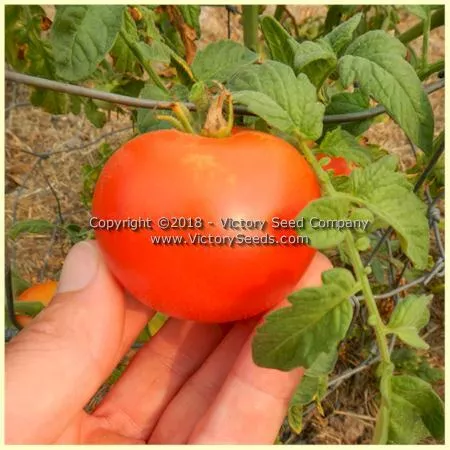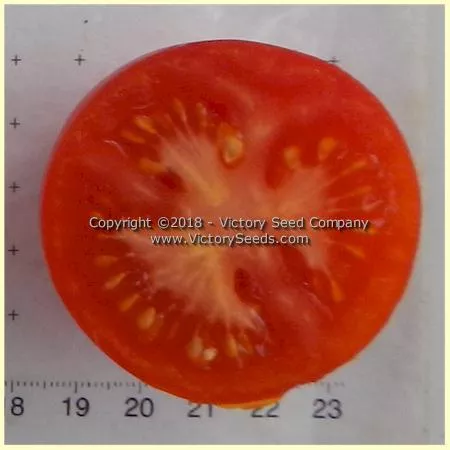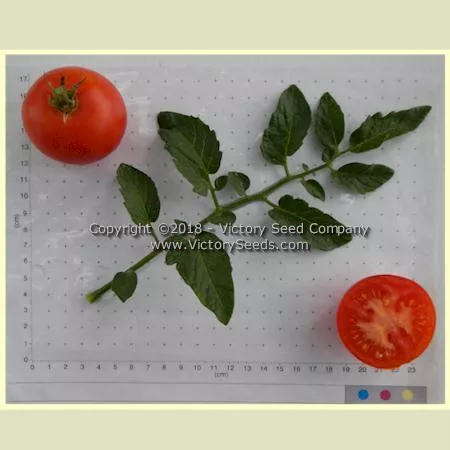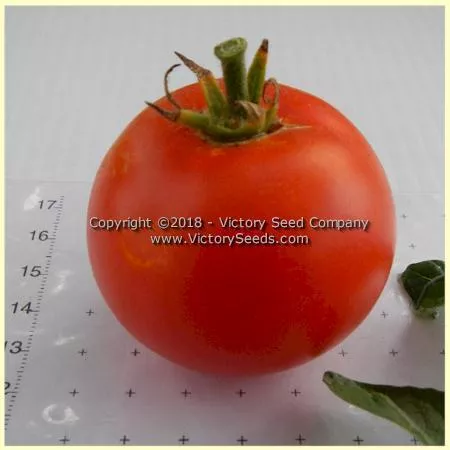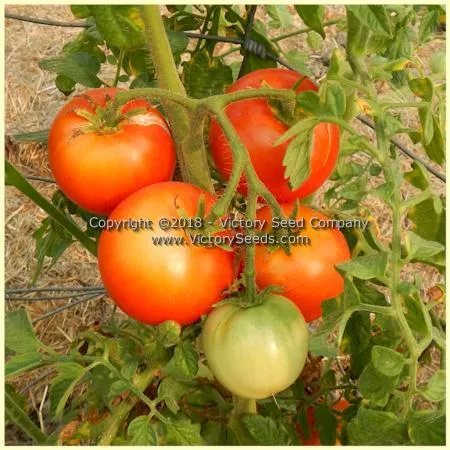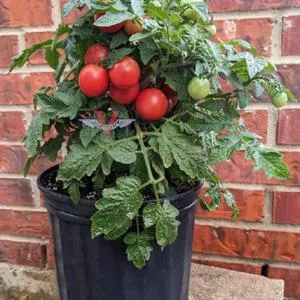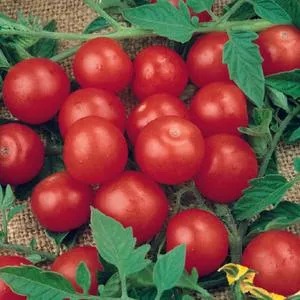




Bay State Tomato
Solanum lycopersicum
Price: $3.45
SKU: 3404431VERY IMPORTANT NOTE: This variety will be available again in early January, 2026. Please signup below to be notified when it becomes available. Click here to learn more about our seasonal products.
80 days, indeterminate - Always on the lookout for varieties that address specific gardening challenges, we found the 'Bay State' tomato in the USDA's genebank and decided to make it available to folks interested in greenhouse tomato production or those growing in hot, humid conditions.
Although we raise 'Bay State' in the field, they were bred as a greenhouse tomato. Their regular leaf plants are somewhat spindly with not a lot of leaf cover but they are productive. The tomatoes are smooth skinned, globe to flattened globe in shape, red colored, and average between two and four ounces each.
'Bay State' is an example of a purposely bred plant variety. Back in the 1930s, Massachusetts' farmers grew a lot of tomatoes for the local markets.[1] Much of this production was early and late in the year in greenhouses. However, growing under glass, with its sometimes hot temperatures and high humidity, presented the problem of crop loss due to a fungus called Cladosporium fulvum, or leaf mold.[2]
To solve this problem, the Massachusetts Agricultural Experiment Station, knowing that currant-type tomatoes, Solanum pimpinellifolium, exhibit resistance to the fungus, went to work. They used a currant tomato as one of the parents in a complex cross with several common early maturing tomato varieties; 'Success', 'Belmont', and 'Break O'Day'. This created material that exhibited the disease resistance, but the resulting fruit were to small to be practical in the marketplace, and they did not perform well in greenhouses.
They then made successive backcrosses with a popular greenhouse variety of the time, 'Waltham Forcing'. After years of selection and stabilization work, the size and productivity goals were met and 'Bay State' was introduced to growers in 1939.[1] Our original seed sample was USDA GRIN accession number PI 370082. It can also be found in Canada's GRIN as accession number CN 381.
Although we raise 'Bay State' in the field, they were bred as a greenhouse tomato. Their regular leaf plants are somewhat spindly with not a lot of leaf cover but they are productive. The tomatoes are smooth skinned, globe to flattened globe in shape, red colored, and average between two and four ounces each.
'Bay State' is an example of a purposely bred plant variety. Back in the 1930s, Massachusetts' farmers grew a lot of tomatoes for the local markets.[1] Much of this production was early and late in the year in greenhouses. However, growing under glass, with its sometimes hot temperatures and high humidity, presented the problem of crop loss due to a fungus called Cladosporium fulvum, or leaf mold.[2]
To solve this problem, the Massachusetts Agricultural Experiment Station, knowing that currant-type tomatoes, Solanum pimpinellifolium, exhibit resistance to the fungus, went to work. They used a currant tomato as one of the parents in a complex cross with several common early maturing tomato varieties; 'Success', 'Belmont', and 'Break O'Day'. This created material that exhibited the disease resistance, but the resulting fruit were to small to be practical in the marketplace, and they did not perform well in greenhouses.
They then made successive backcrosses with a popular greenhouse variety of the time, 'Waltham Forcing'. After years of selection and stabilization work, the size and productivity goals were met and 'Bay State' was introduced to growers in 1939.[1] Our original seed sample was USDA GRIN accession number PI 370082. It can also be found in Canada's GRIN as accession number CN 381.
Fruit Color: Red
Harvest Timing: Main Crop / Mid-Season
Genetic Classification: Open Pollinated
Harvest Timing: Main Crop / Mid-Season
Genetic Classification: Open Pollinated
Sow seeds indoors (do not direct sow into the garden), using sterile seed starting mix, 6 to 8 weeks before your last expected frost date. Plant 1/4" deep, water lightly but keep moist until emergence.
Full light and cooler temps (60° to 70°) will help to prevent the seedlings from becoming too leggy. If plants become rootbound before you can safely set them into the ground, transplant them into larger pots.
Harden off plants before planting outside. Young plants are very susceptible to frost and sunburn damage. Avoid too much nitrogen. Water evenly but not in excess.
Click here to view our full tomato growing guide.
Full light and cooler temps (60° to 70°) will help to prevent the seedlings from becoming too leggy. If plants become rootbound before you can safely set them into the ground, transplant them into larger pots.
Harden off plants before planting outside. Young plants are very susceptible to frost and sunburn damage. Avoid too much nitrogen. Water evenly but not in excess.
Click here to view our full tomato growing guide.
Informational References:
- "Bay State, A Red Forcing Tomato Bred for Resistance to Leaf Mold," E. F. Guba, Research Processor of Botany, Massachusetts Agricultural Experiment Station, Bulletin No. 393, June, 1942.
- Cladosporium fulvum, abbreviated as Cf-2, is now know as Passalora fulva.
- There was a tomato by the same name, "Bay State," introduced in about 1889 by a Massachusetts nurseryman and horticulturalist named Arthur Bridgman Howard. A. B. Howard & Son marketed this seemingly obscure variety for a number of years but we could not find it in any other seed catalogs, indicating that it did not receive wide distribution nor acceptance, and must have disappeared long before the Massachusetts A. E. S. bred and named 'Bay State'.
Customer Reviews:
Do you have experience with this one? 📝 📣 Write a review!
No reviews have been posted yet.

